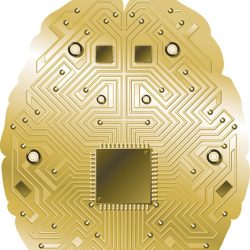You’re Muted — or Are You?
Videoconference apps often don’t give up access to microphones, raising privacy concerns.
Kassem Fawaz’s brother was on a videoconference with the microphone muted when he noticed that the microphone light was still on — indicating, inexplicably, that his microphone was being accessed.
Alarmed, the brother asked Fawaz, an expert in online privacy and an assistant professor of electrical and computer engineering at UW–Madison, to look into the issue.
Fawaz and graduate student Yucheng Yang PhDx’23 investigated whether this “mic-off-light-on” phenomenon was more widespread. They tried out many videoconferencing applications on major operating systems, including iOS, Android, Windows, and Mac, checking to see if the apps still accessed the microphone when it was muted.
“It turns out, in the vast majority of cases, when you mute yourself, these apps do not give up access to the microphone,” says Fawaz. “And that’s a problem. When you’re muted, people don’t expect these apps to collect data.”
Fawaz and Yang, along with colleagues from Loyola University Chicago, used runtime binary analysis tools to trace raw audio in popular videoconferencing applications as the audio traveled from the app to the computer audio driver and then to the network while the app was muted. They found that all the apps they tested occasionally gather raw audio data while mute is activated, with one popular app gathering information and delivering data to its server at the same rate regardless of whether the microphone is muted or not. The findings raise privacy concerns.
“With a camera, you can turn it off or even put your hand over it, and no matter what you do, no one can see you,” says Fawaz. “I don’t think that exists for microphones.”
Turning off a microphone is possible in most device operating systems, but it usually means navigating through several menus. Instead, the team suggests the solution might lie in developing easily accessible software “switches” or even hardware switches that allow users to manually enable and disable their microphones.
Published in the Fall 2022 issue




Comments
No comments posted yet.